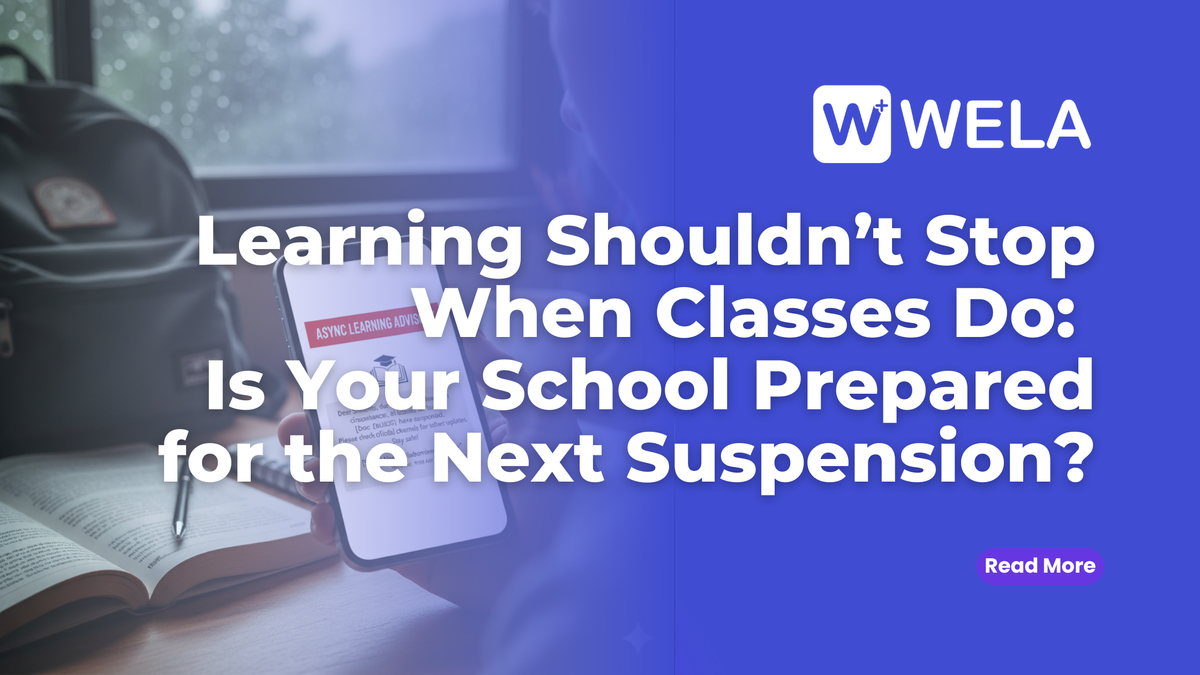Learning Shouldn’t Stop When Classes Do: Is Your School Prepared for the Next Suspension?

In the Philippines today, parents are increasingly worried. Class suspensions — both for public and private schools are happening with some regularity: due to weather events, natural disaster, health alerts, structural safety checks, and other disruptions. These suspensions raise a pressing question for the owners and administrators of private schools: “Is our school equipped to continue learning when face-to-face instruction is interrupted?”
The Current Landscape in the Philippines
Here’s what’s going on:
- On October 20, 2025, many schools across several provinces (public and private) had face-to-face classes suspended because of the impact of Tropical Storm Ramil. (GMA Network)
- In Metro Manila and nearby areas, the Department of Education (DepEd) suspended in-person classes on October 13-14, 2025, due to a rise in influenza-like illnesses among learners and school personnel. (Manila Bulletin)
- In parts of Negros Oriental, after a magnitude 5.8 aftershock, several LGUs (local government units) ordered class suspensions to allow school building inspections for structural integrity. (Philippine News Agency)
- A report indicates that frequent class suspensions have resulted in a 12-14% drop in Math and Science grades among Grade 4 students in affected areas. (Philstar)
These examples show that class suspensions are not just one-off events, but a recurring challenge. Whether from storms, health issues, or structural safety, the disruption to learning is real.
Why This Matters to Private Schools
For private schools, the stakes are high:
- Parent expectations are different: many families enroll their children in private schools precisely because they value reliability and consistency of instruction. Interruptions may erode trust.
- Learning loss: The drop in academic performance (e.g., in Math and Science) highlights that when face-to-face instruction stops, students can fall behind quickly.
- Operational risk: If a school isn't ready to pivot to alternate modes of delivery, it may end up scrambling, leading to confusion, inconsistent teacher-student contact, and lost momentum.
- Competitive differentiation: Schools that can offer robust asynchronous (or hybrid) learning systems are better positioned to reassure parents and maintain continuity when disruptions occur.
What Readiness Looks Like: Are You Set for Asynchronous Learning?
Here are key elements a school should address to be prepared.
1. Infrastructure & Platform
- A learning management system (LMS) that supports uploading lesson content, assignments, recordings, quizzes, and tracking.
- Communication tools (teacher-student, teacher-parent) ready to go even if physical classrooms are closed.
- Access options for students who may have limited internet or device access: downloadable modules, offline work, asynchronous discussion boards.
2. Teacher Training & Workflow
- Teachers trained to design asynchronous lessons: chunked video/audio, supplementary modules, self-paced tasks.
- A workflow for backup plans: when a suspension is announced, students immediately shift to asynchronous modules rather than “waiting for instructions”.
- Clear timelines and expectations for students/parents regarding submission, feedback, and check-ins.
3. Student & Parent Engagement
- Orientation for students and parents on how asynchronous learning works and what their roles are when suspensions happen.
- Mechanisms to monitor student engagement, participation, and progress when face-to-face contact is lost.
- Regular communication reassuring parents that their child’s learning is continuing, even if classrooms are closed.
4. Continuity / Backup Plan
- A formalised “continuity plan” for class suspension days:
- Trigger: storm, quake, health alert → announcement.
- Response: immediate shift to asynchronous mode.
- Recovery: audit of student outputs, teacher feedback, identification of students falling behind, catch-up strategy.
- Schools need to look beyond “we’ll re-open when it’s safe” to “we’ll keep learning until we’re back”.
Why Now Is the Right Time
Given the recent patterns in the Philippines, the urgency is clear:
- The flu-like illness in Metro Manila highlighted that even a couple of days of face-to-face suspension requires alternate delivery. (GMA Network)
- Provincial class suspensions following earthquakes illustrate the need for structural unpredictability in disruptions. (Philippine News Agency)
- The measurable drop in learner performance suggests that each suspension comes with academic consequences. (Philstar)
- For private schools, demonstrating preparedness becomes a differentiator and builds trust with parents.
Final Thought
Parents aren’t simply worried about one missed day of class, they’re concerned about gaps accumulating, momentum lost, and whether their children’s education will keep moving forward regardless of disruptions. Private schools that proactively set up robust asynchronous learning systems send a powerful message: “Yes, we’re ready. We’ll keep your child learning.”
If your school hasn’t yet established or tested its asynchronous learning readiness, now is the time. Because in the Philippines today, disruptions aren’t hypothetical, they’re real, frequent, and consequential.
